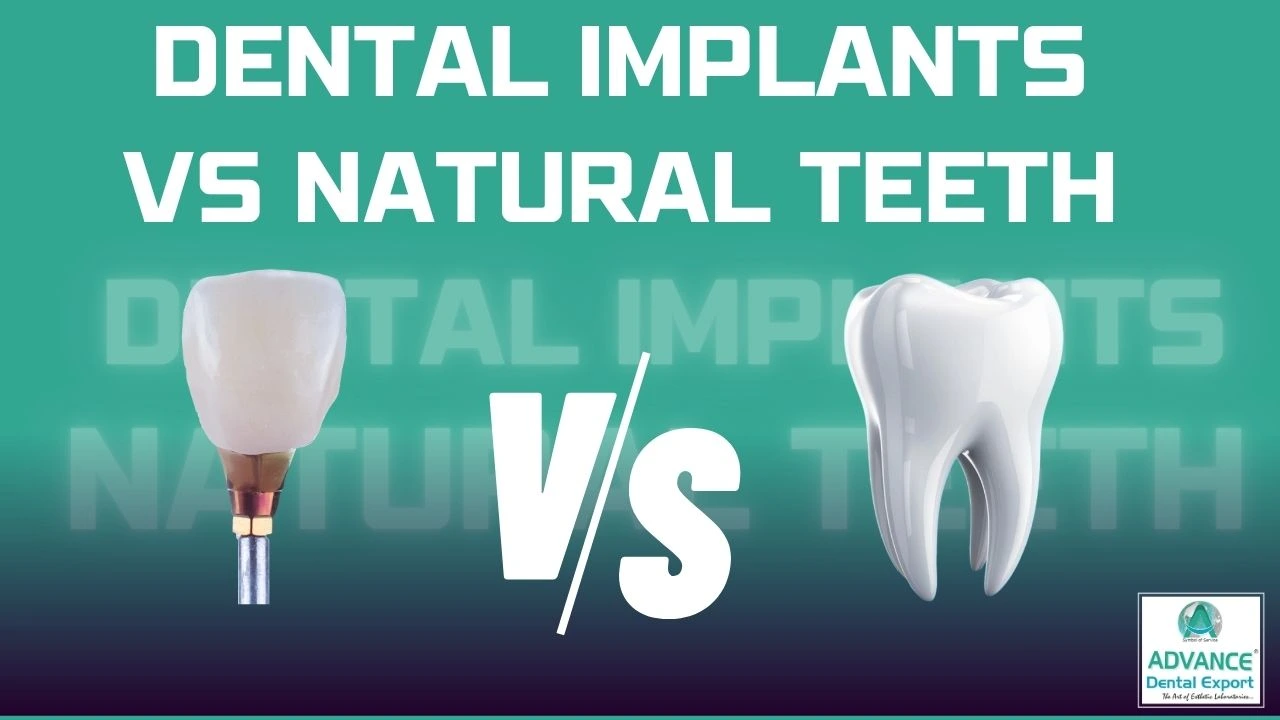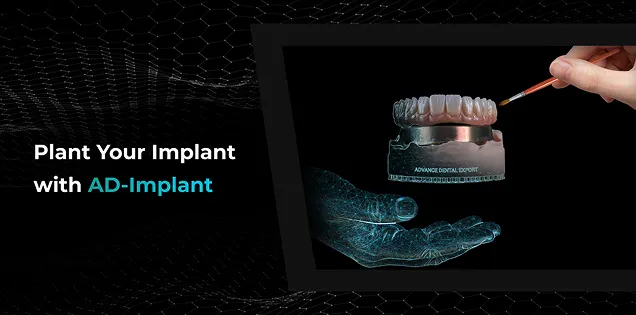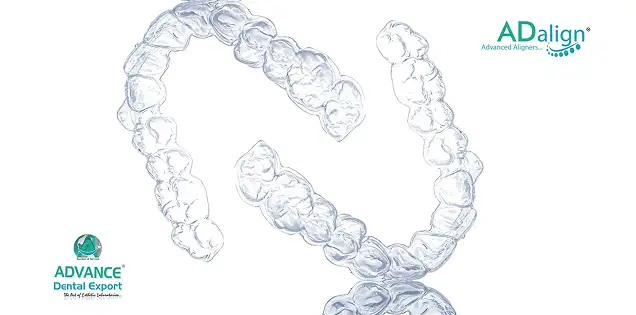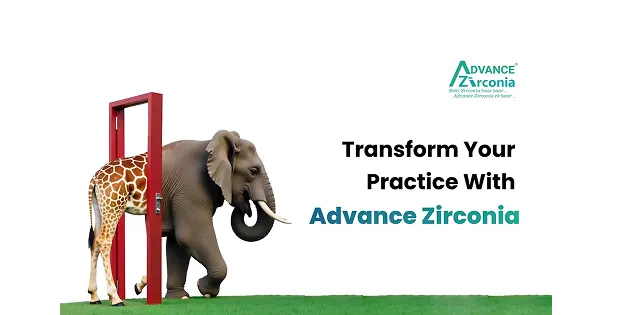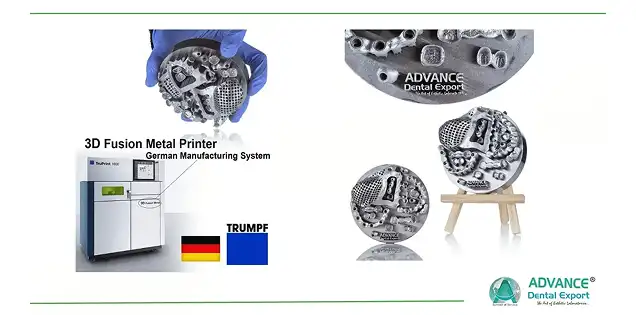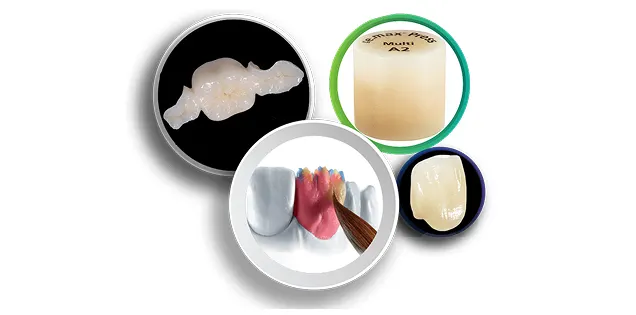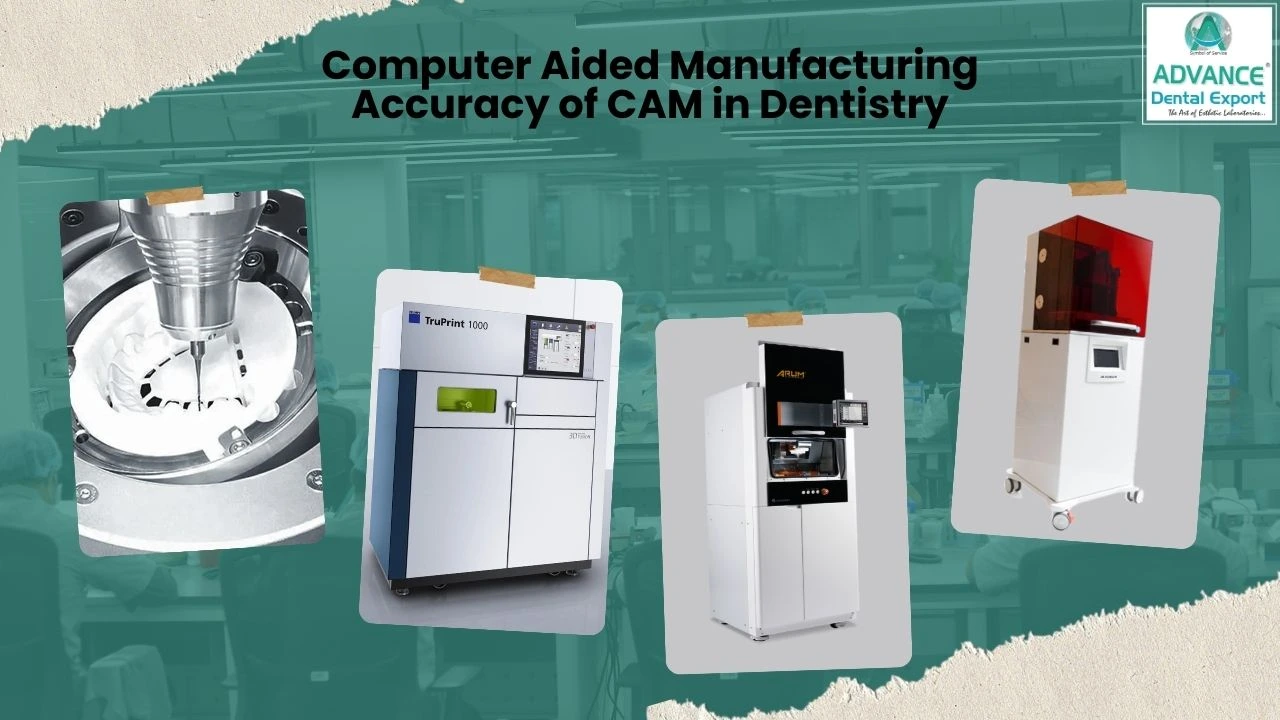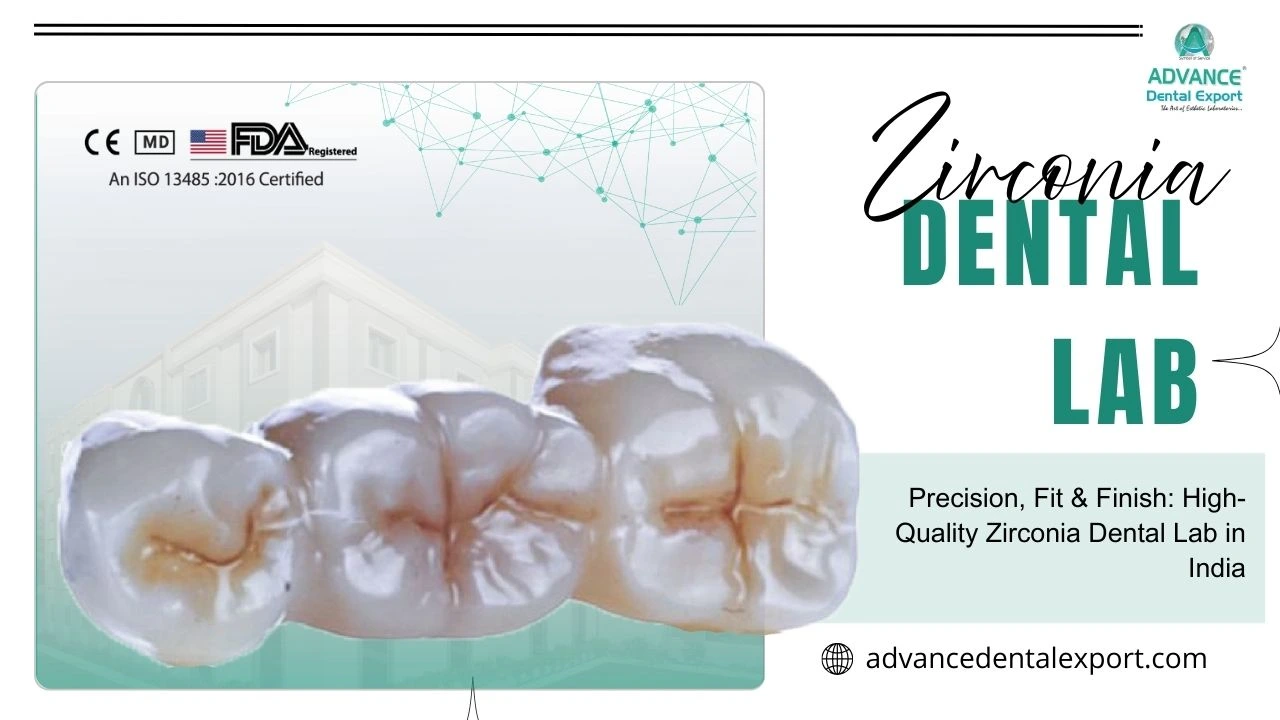Common question every dentist asks us: “Should I save or replace this tooth?”
Working in the dental restoration field for over 20 years, we encounter this question constantly in clinical discussions and treatment planning.
As a dental laboratory specializing in crowns, bridges, and implant restorations, we bring over two decades of practical, evidence-based insight into the long-term outcomes of both preservation and replacement.
Supplying dentists across the globe, we know how important it is to get this decision right. It’s not just about restoring a tooth — it’s about preserving oral health, function, and patient confidence for years to come.
Our laboratory works closely with leading prosthodontists and periodontists, translating real-world feedback from clinical cases into restorative best practices.
Every day, dentists contact us with cases where they must decide: is it better to preserve the natural tooth or move to an implant ? This isn’t a decision to take lightly. It affects the patient’s comfort, chewing ability, aesthetics, and the longevity of the treatment.
Common situations where this decision arises include:
- Teeth with deep caries and insufficient structure
- Severe periodontal disease with bone loss
- Root fractures that can’t be restored predictably
- Failed or complicated endodontic treatments (often leading to the classic endodontic vs implant decision)
- Cases with challenging occlusal or prosthetic requirements
From our laboratory perspective, we’ve seen that every case tells a different story. Preserving a tooth — when feasible — maintains the natural periodontal ligament (PDL), proprioception, and bone structure, which implants cannot fully replicate.
However, in certain situations, implants provide a predictable, long-lasting solution.
While this guide is based on extensive experience and current evidence, each patient’s case is unique — clinicians should always adapt based on individual diagnostics and clinical judgment.
So, we have prepared this comparison guide on preserving natural teeth vs dental implants, and when to choose one of these options for better patient outcomes.
We reference peer-reviewed literature, long-term studies, and clinician feedback to ensure every point in this guide reflects real, practical, and evidence-driven dentistry.
Dental Implants vs Natural Teeth: Comparison Overview
Both natural teeth and dental implants have their unique advantages and considerations, and understanding these differences is crucial for making informed clinical decisions. Over the years, we’ve evaluated thousands of prosthetic cases, giving us a unique view of what truly works in long-term function and patient satisfaction.
We reference peer-reviewed literature and clinical trials to back every recommendation made herein. Below is a basic comparison:
|
Feature |
Natural Teeth |
Dental Implants |
|
Structure |
Enamel, dentin, pulp, and root, anchored by PDL |
Titanium/zirconia post in bone; no PDL |
|
Movement & Shock Absorption |
Slight movement due to the PDL; absorbs chewing forces |
Rigidly fixed; absorbs less force |
|
Sensory Feedback |
High; nerves detect pressure, texture, and position |
Limited; lacks PDL mechanoreceptors (no periodontal ligament proprioception) |
|
Longevity |
It can last a lifetime with care; prone to decay, gum disease, and trauma |
Long-lasting (10–15 years); not prone to decay, but risk of peri-implantitis |
|
Function |
Natural bite force distribution and chewing efficiency |
Restores chewing function; less tactile feedback |
|
Aesthetics |
Natural translucency and color |
Modern crowns mimic natural teeth; subtle differences may exist |
|
Maintenance |
Regular dental care; occasional restorations |
Good oral hygiene; periodic professional checks |
|
Cost |
Routine care is cheaper; major restorations add up |
Higher initial cost; can be cost-effective long-term |
In complex situations, simply comparing basic natural tooth prognosis against standard single-tooth implant replacement is insufficient. We must account for specialized restorative and periodontal procedures. A successful outcome depends on biological compatibility, prosthetic planning, and long-term maintenance.
These insights form a practical clinical decision matrix — guiding dentists to weigh biological preservation against prosthetic predictability in every case.
Periodontal Ligament and Osseointegration
Natural teeth are held by the periodontal ligament (PDL), allowing movement, proprioception, and force absorption.
Implants fuse directly to bone through osseointegration — highly stable but without the PDL’s biological cushioning and sensory feedback.
From a restorative standpoint, this difference defines how we design occlusion, contour, and contact in every prosthetic case we manufacture.
Explore Our Restorations
Sensory Feedback and Force Distribution
Natural teeth sense pressure, temperature, and texture through nerves in the pulp and PDL — a function implants cannot replicate.
That’s why we always recommend occlusal equilibration (occlusal adjustment) in implant restorations to avoid overload.
Our 20-year record of follow-ups confirms that occlusal precision is one of the most decisive factors in long-term implant success.
Structural and Functional Comparison
Natural teeth flex slightly and protect surrounding bone; implants are rigidly fixed. This rigidity requires proper material selection and stress management in prosthetic design.
Implants, usually made of titanium or zirconia, are fixed rigidly into bone. This stability is excellent for function but comes with a trade‑off — a lack of flexibility. This difference affects how chewing forces are distributed, which is why implant restorations require careful planning to avoid mechanical complications.
All restorations issued from our lab undergo strict quality control and digital fit verification to ensure mechanical reliability — a standard that mirrors the precision implants demand.
Survival Rates: Natural Teeth vs Implants
Natural teeth can last a lifetime with proper care, but are vulnerable to decay and trauma.
We’ve tracked restoration outcomes over decades and observed that cases combining sound biological foundations with prosthetic precision achieve the best survival rates.
Implants show high long-term survival ( ≈10-year data commonly ≥90% ) when case selection, surgery, and maintenance are optimal. Implants are not immune to complications and can fail earlier in certain high‑risk situations, especially if the patient has a history of periodontal disease or poor oral hygiene.
Common Failure Modes
In our laboratory work, we’ve seen that natural teeth most often fail due to caries, fracture, or advanced periodontal disease. Implants, on the other hand, have their own unique risks:
- Peri‑implantitis — inflammation of the tissue around implants.
- Bone loss around the implant site.
- Mechanical failures — such as screw loosening or crown fractures.
These risks mean that both options require proper planning, patient education, and ongoing maintenance to ensure success. Our case data consistently show that early diagnosis, controlled occlusion, and material precision reduce mechanical failures over time.
Complications and Risk Management
In our professional journey, we’ve learned that long-term success is built on prevention and precision. Moreover, every treatment, whether preserving a natural tooth or placing an implant, comes with potential risks. The key to long-term success lies in understanding these complications and managing them effectively. Here are some of the major complications & risks for both natural teeth and implants , with possible strategies to reduce risk:
Peri‑implantitis vs Periodontitis
Periodontitis: This is inflammation and infection of the tissues surrounding a natural tooth, caused mainly by plaque and tartar. Left untreated, it can lead to bone loss and tooth loss. It is one of the most common causes of failure in preserved teeth.
Peri‑implantitis: This is the implant equivalent — inflammation around the implant site, often with bone loss. It usually develops due to poor oral hygiene, excess occlusal force, or improper implant placement. While peri‑implantitis can be managed, it is more difficult to treat than periodontitis and can lead to implant failure.
💡 Clinical Tip: Both conditions require strict oral hygiene, regular professional check-ups, and early intervention. Educating patients about home care and periodic assessment is critical for prevention.
Continuous monitoring and collaboration between clinicians and labs help detect early biomechanical warning signs — a core part of our quality philosophy.
Mechanical and Technical Complications
Natural teeth and implants can both face mechanical issues:
- Natural Teeth: Fractures, cracked cusps, or failure of restorations due to occlusal stress or secondary decay.
- Implants: Screw loosening, abutment fracture, prosthetic screw fracture, crown loosening, and implant fracture.
These complications can usually be prevented with:
- Proper diagnosis and treatment planning
- Correct occlusal load distribution
- High‑quality restorative materials
- Precise laboratory fabrication and accurate fit
💡 Clinical Tip: Good communication between the dentist and laboratory, plus careful occlusal adjustment, is essential to minimize these complications. Our digital workflow integrates CAD/CAM verification and stress mapping to minimize these risks.
Maintenance & Recall Protocols
Maintaining both natural teeth and implants requires a proactive approach:
- For Natural Teeth: Routine oral hygiene at home, professional scaling and polishing, and periodic radiographs to detect early pathology.
- For Implants: Similar home care routines, but also specialized peri‑implant probing, checking for mobility, and radiographic bone level evaluation.
We recommend a tailored recall protocol based on the patient’s risk profile — every 3–6 months for high‑risk cases and at least annually for low‑risk cases. This proactive maintenance ensures early detection of complications and prolongs the longevity of both teeth and implants.
Note: Immediate and root-analogue implants require strict case selection (adequate primary stability, intact socket walls, infection control, patient risk factors) to achieve predictable outcomes.
Record baseline peri-implant probing depths and a baseline radiograph at prosthesis delivery for future comparison.
💡 Clinical Tip from our laboratory: We educate partner dentists and patients that implants are not “maintenance-free” — preventive care is the real investment in longevity.
Emerging Trends & Alternatives (2025–26)
- Regenerative Endodontics & Bioactive Cements: Use stem cells, growth factors, and bioactive materials to heal and preserve teeth naturally.
- Root-Analog & Immediate Implants: Custom root-shaped implants and placing implants right after extraction to save time and bone.
- Digital Diagnostics: Cone-beam computed tomography (CBCT) and AI tools help dentists plan better and decide whether to save a tooth or place an implant. Use imaging judiciously in line with ALARA/ALADA principles (as low as reasonably achievable/diagnostically acceptable).
Looking for a trusted lab partner? Get high-precision restorations from Advance Dental Export
💡 Clinical Tip: These innovations give dentists more options to improve outcomes and patient satisfaction. We actively collaborate with technology providers and research institutions to test these new materials and workflows before recommending them to our clinical partners.
Conclusion
There’s no one-size-fits-all solution. Both options have their strengths and limitations, and success depends on careful evaluation of each patient’s case. This guide reflects over two decades of restorative and implant dentistry experience, helping clinicians make evidence-based treatment choices. The key points to remember are:
- Natural teeth, when healthy or restorably sound, offer unmatched function, proprioception, and bone preservation.
- Dental implants are a reliable solution when preservation isn’t possible, but they require careful planning, proper maintenance, and patient compliance.
- Emerging technologies and diagnostic tools are improving our ability to make confident, predictable decisions.
After decades of lab–clinical collaboration, our wisdom remains:
“Replace only what cannot be predictably preserved.”
This mindset ensures we respect oral biology, enhance prosthetic accuracy, and build lasting trust between dentists, labs, and patients.
Our mission as a dental laboratory is simple — to help every clinician achieve restorations that last and smiles that inspire confidence. Based in India, our laboratory partners with clinicians nationwide and internationally; recommendations align with contemporary prosthodontic and periodontic practice.
Professional disclaimer: This guide is for dental professionals. It supports clinical decision-making and does not replace individual diagnosis, informed consent, or local regulatory guidance.
Answers in Brief for Your Queries
Q: How should a dentist decide whether to save or replace a tooth?
A: The decision depends on periodontal stability, remaining tooth structure, and overall function. If the tooth offers sound bone support and meets the ferrule rule (~1.5–2 mm of circumferential vertical tooth structure above the finish line), preservation is usually preferred. However, when decay, fracture, or bone loss compromises prognosis, an implant becomes a predictable, long-term alternative. The guiding principle remains: replace only what cannot be predictably preserved.
Q: What are the key differences between natural teeth and dental implants?
A: Natural teeth are supported by a periodontal ligament (PDL) that provides proprioception, flexibility, and natural bone stimulation, while implants integrate directly into bone through osseointegration, offering rigidity but no sensory feedback. Teeth can decay or develop periodontitis, whereas implants risk peri-implantitis and mechanical stress. Understanding these biological and functional differences ensures better treatment planning and occlusal design.
Q: What are the most common failure modes for teeth and implants?
A: Natural teeth usually fail from caries, root fracture, or periodontal disease, while implants fail due to peri-implantitis, screw loosening, or overload-related fractures. Most failures trace back to poor occlusal balance, material stress, or hygiene neglect. Careful diagnosis, precision fabrication, and regular recall greatly reduce these risks and improve long-term success.
Q: What maintenance and recall protocols should be followed for implants versus natural teeth?
A: Both need consistent maintenance — teeth require routine cleanings, radiographs, and caries prevention, while implants demand peri-implant probing, bone-level monitoring, and non-metallic/titanium-safe instruments to avoid scratching abutments. High-risk patients should be recalled every 3–6 months. Educating patients that implants are not maintenance-free is key to avoiding future complications.
Q: What are the latest trends and technologies shaping the future of tooth preservation and implant dentistry?
A: Modern dentistry is shifting toward biological preservation and digital precision — regenerative endodontics, bioactive cements, and root-analog implants aim to save teeth naturally, while AI-driven CBCT planning and immediate implant protocols improve predictability. These innovations bridge the gap between biology and technology, giving clinicians better tools for long-term restorative success.
